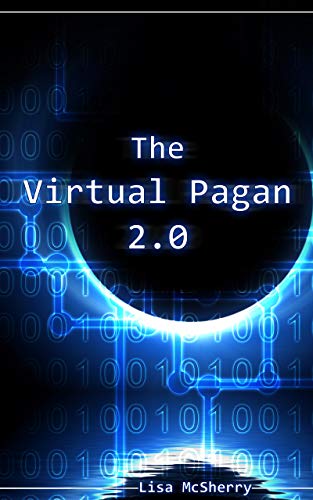In 2002, Lisa Mc Sherry published The Virtual Pagan: Exploring Wicca and Paganism Through the Internet. At the time it was a revolutionary book, guiding practitioners to (what was for many) a new frontier. She explained the ins and outs of connecting to the internet, as well as the various communication tools a user might need: IRC, usenet, and the world wide web chief among them. She then went on to discuss in great detail what spiritual practice looked like on the internet at that time, what it was excellent for and what it was not. Fast forward to 2021 and we find ourselves in a very different world. The complexities and capabilities of online practice have exploded, and if you aren't a deft hand already it is easy to become overwhelmed. As of this writing the world is just starting to emerge from the global pandemic, which made the need for remote connection more critical than ever, but even if (gods willing) you are reading this in a more normal time, having a need for more spiritual connection than your local community can provide is always a possibility. Fortunately, an extensively-revised and expanded The Virtual Pagan 2.0 is now here, helping the reader to explore the modern application of technology to spirituality.
Ms. Mc Sherry's qualifications to write this book are extensive. As a founder of JaguarMoon cybercoven in 2020, she now has more than two decades of experience practicing witchcraft and teaching these methods to the coven's students. The reader also benefits from her own technical education in the school of hard knocks, as it were; she has tested and worked through episodes of trial-and-error to develop a deep understanding not just of the tools that readers may need, but also the challenges that they are likely to face. The first Part of the book is an incredible primer on being safely and securely online in *any* capacity. I'd hand these chapters to a friend interested in their digital health even if they'd never need the rest of the book. Part two of the book gets into the meat of making connections online with pagan communities in particular. Not just how to do it, but why; what to look for and also what to avoid. The section on communication is almost quaint at times but it is good to remember that this is a book that might be given to someone absolutely new to being online; hard as it is for some of us to believe, new users are joining the online world every day even now. Besides, while it may start with a dictionary of acronyms from the hoariest old chat rooms, soon enough she's going over best practices for video camera usage and how to self-check your body language.
Part three of The Virtual Pagan 2.0 is likely the portion of most interest to a reader who is well-versed in the online world in general but new to the idea of practicing witchcraft online. Ms. Mc Sherry goes over practices for preparing yourself and your tools for magick, with a particular emphasis on what is the same and what is different from "normal" when your plan is to work online. She also provides examples of meditation and preparatory practices to get you started. She also goes into very useful detail on cyber ritual; it isn't as simple as reidng the text or your usual ritual into a camera, and she explains why that is and what you'll want to adjust to have a great ritual online. Once again, she provides concrete examples of ritual texts that you can use as-is or as inspiration to create your own purpose-made rituals. The book ends with a significant series of Appendices; they could almost be seen as a small collection of essays on topics that defied easy categorization within the structure of the book proper. From thoughts on organizing your book of shadows to important considerations regarding copyright infringement (an unrecognized epidemic in some corners of the pagan internet), the appendices are not to be skipped.
Taken as a whole, The Virtual Pagan 2.0 is a timely, important addition to pagan literature. Not every reader will need every portion of the book, but it is so packed with useful advice and cogent explanations that, much like a museum, the price of admission is well-worth the opportunity to peruse the galleries that most interest you. And also like a museum, if you wander down a hall you didn't think you were interested in you're likely to discover unexpected treasure. As someone who is reading this review on a website, I can say with certainty that this is a book you should not miss.
~review by Patricia Mullen
Author: Lisa Mc Sherry
2021
pp. 218, $14.99
The Virtual Pagan 2.0

©
2010 - 2025
Facing North
